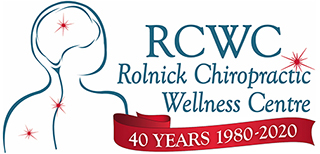Enhance Your Health
Health Tip of the Week: Panic Attack vs Heart Attack
A much bigger issue than the pandemic, but rarely discussed health problem is anxiety and stress related disorders. As our society has advanced to a more technologically based way of working and interacting with each other, cases of anxiety, depression, stress and other mental health issues have sky rocketed.
The scariest part is that this increase is ever so evident in our teenage and adolescent age groups. More and more parents come into my office and discuss how their children suffer from anxiety and depression. The most common symptom of anxiety disorder presented to me from the younger generation (as well as adults) is panic attacks.
A panic attack is usually described as a sudden intense fear or anxiety that brings on physical symptoms. Unfortunately, for those that suffer from anxiety, a panic attack can also come out of nowhere, even in a moment of calm. One stray thought can lead to an onslaught of symptoms. The most common being a pounding or racing heart, sweating, chills, trembling, breathing problems, weakness or dizziness, tingly or numb hands, chest pain, stomach pain, and nausea.
A major concern for people having a panic attack (especially the first time) is that they feel like they are dying or having a heart attack. Most panic attacks subside in anywhere from 5-30 minutes. When a panic attack occurs there are steps that can help a person get through the cascade of symptoms and return to a calmer state.
Breathe in as slowly, deeply and gently as you can, through your nose.
Breathe out slowly, deeply and gently through your mouth.
Some people find it helpful to count steadily from one to five on each in-breath and each out-breath. Close your eyes and focus on your breathing. Sometimes changing your physical environment will help, like getting fresh air, splashing cold water on your face or even a light, self-given slap or tapping to the face.
The prevalent fear when having a panic attack is that you are having a heart attack. The reason for this thought is that both conditions contain chest pains, shortness of breath and feeling light headed and faint.
The major difference between the two conditions is the location of pain.
When having a heart attack, one typically may have pain that radiates into other body parts such as the shoulder, arm and jaw. Panic attack chest pain primarily is located in the chest.
The other difference is symptoms from these conditions is that heart attack chest pain is described as severe pressure as if someone was sitting on your chest. Panic attack chest pains are more of a sharp, stabbing chest pain and also contain a rapid or racing heartbeat.
The other big difference is that a heart attack chest pain usually is associated with physical exertion such as after climbing a flight of stairs or shoveling snow.
Another point to be concerned about is that both of these conditions can wake you up at night. If you have zero history of panic attacks, the odds of a first ever panic attack waking you up at night from a sound sleep are virtually non-existent. If you are woken up at night with symptoms related to the heart with no panic attack history, more than likely you are having a heart related condition and should seek medical help.
The bottom line is that a heart attack is a medical emergency. A panic attack isn’t (thought it feels like one). If you have never had panic attacks before, the overlap in symptoms, can make it tough to tell them apart. It is better to be safe than sorry.
If you have chest pain or other heart attack symptoms — or if you’re not sure if it’s a heart attack or panic attack it is always best to have medical care.

